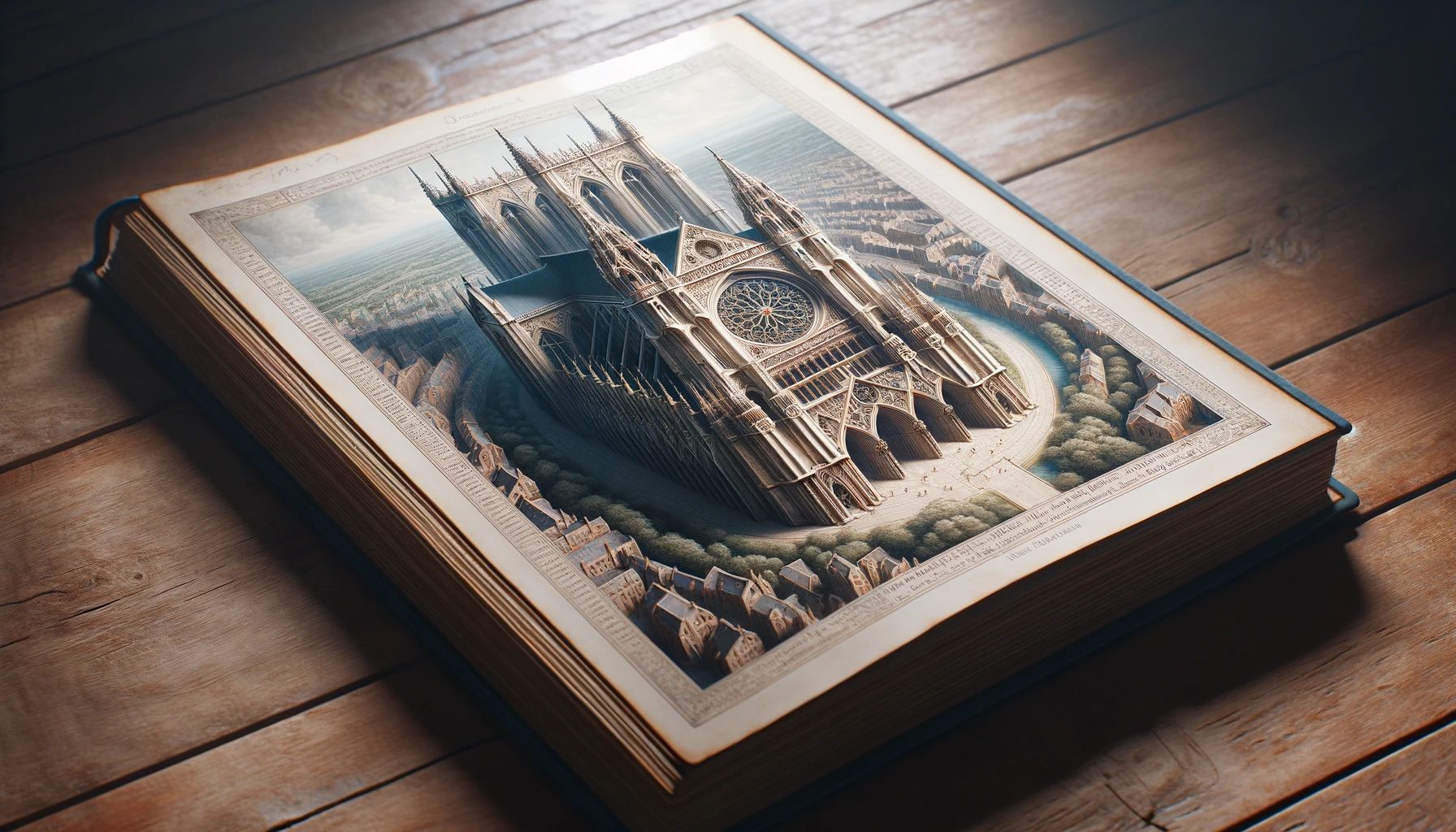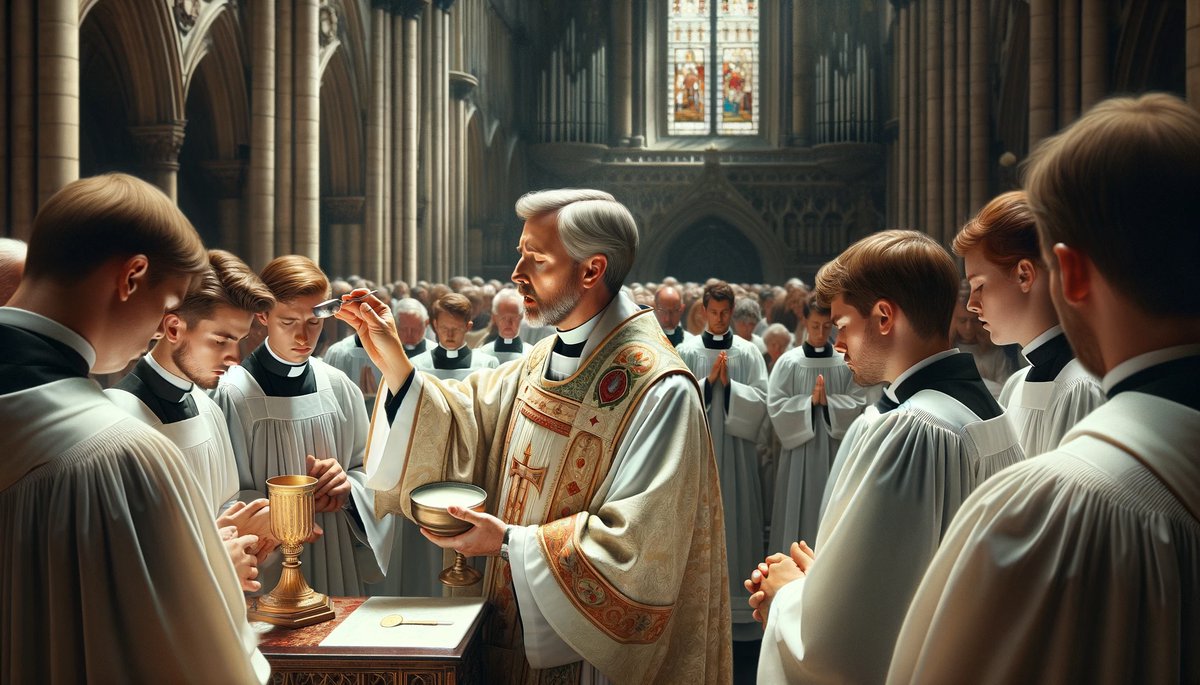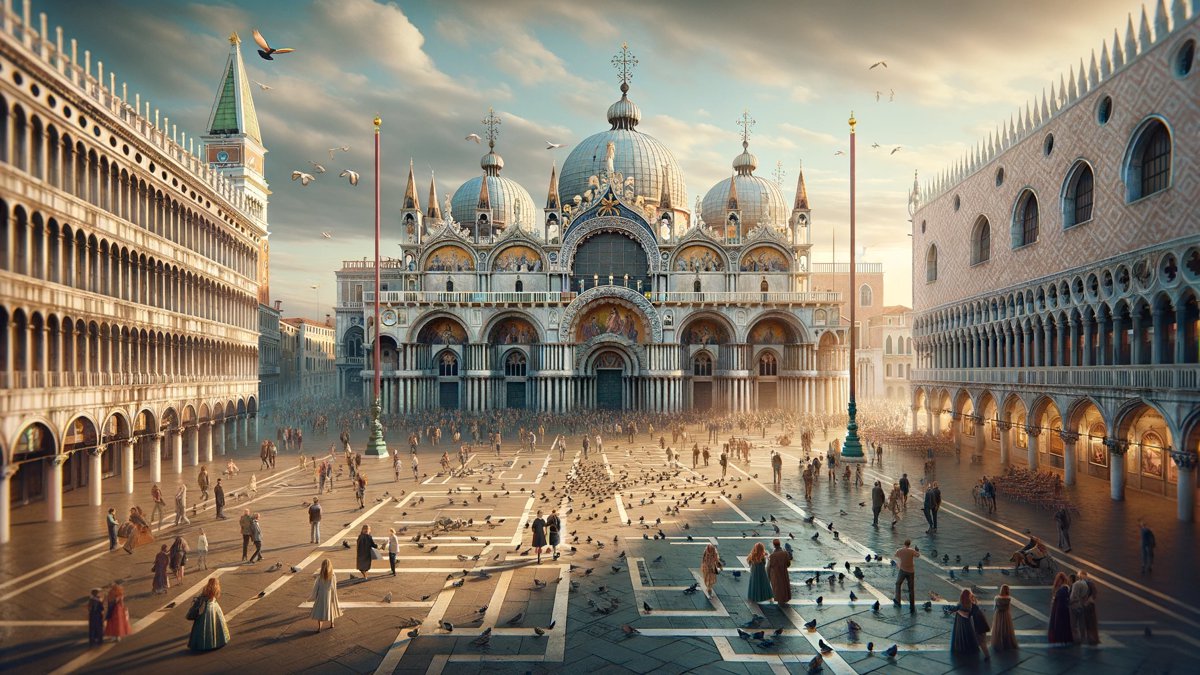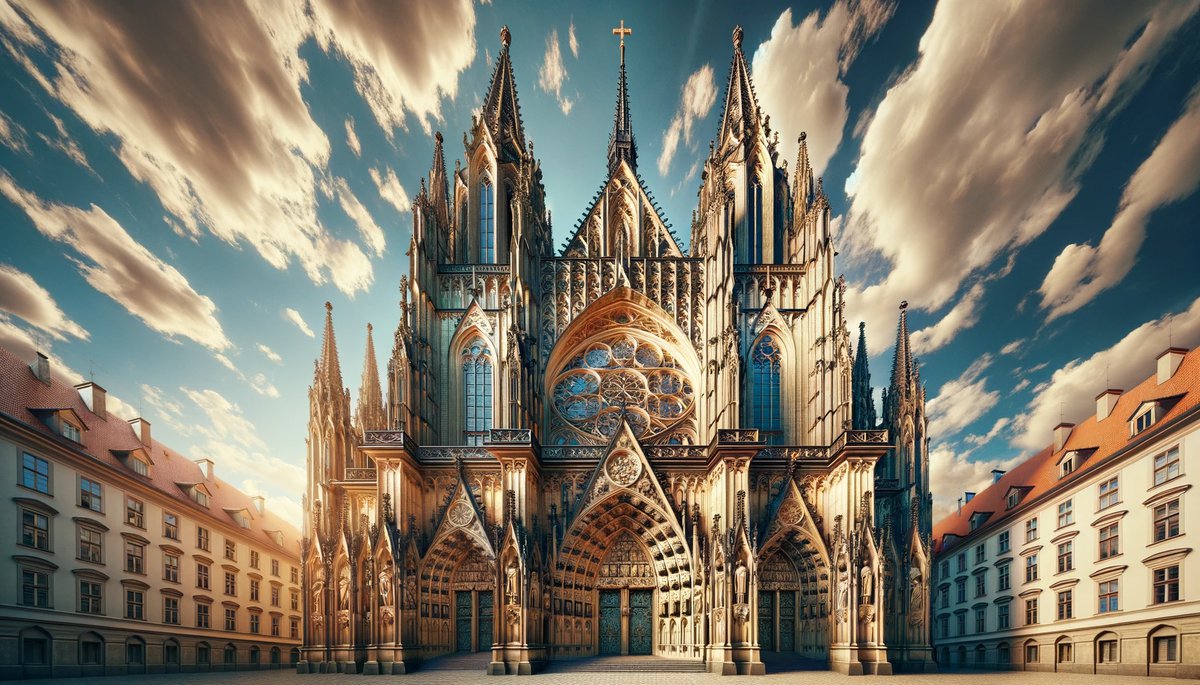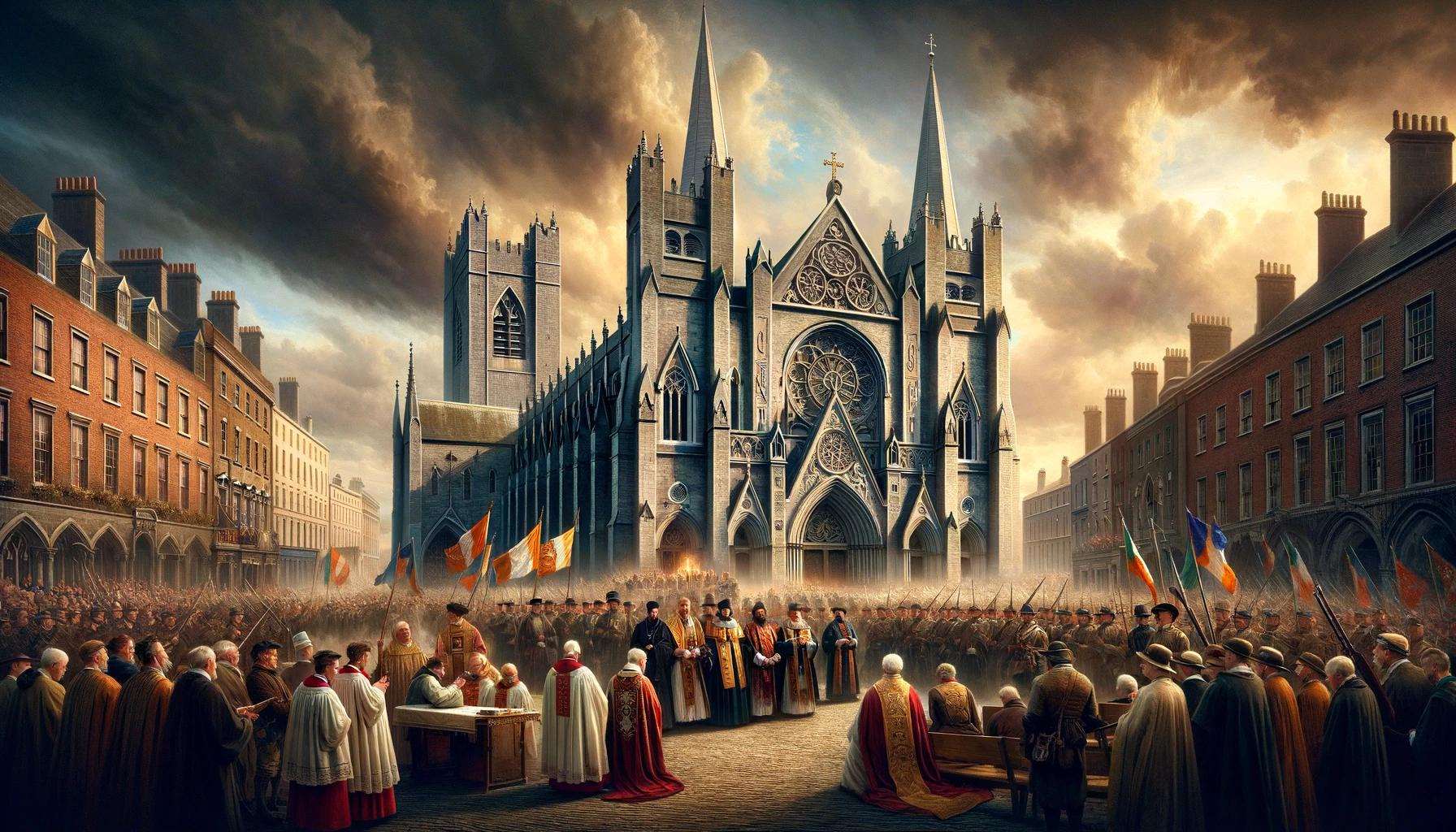Home>Arts and Culture>What Did St. Andrews Cathedral Look Like
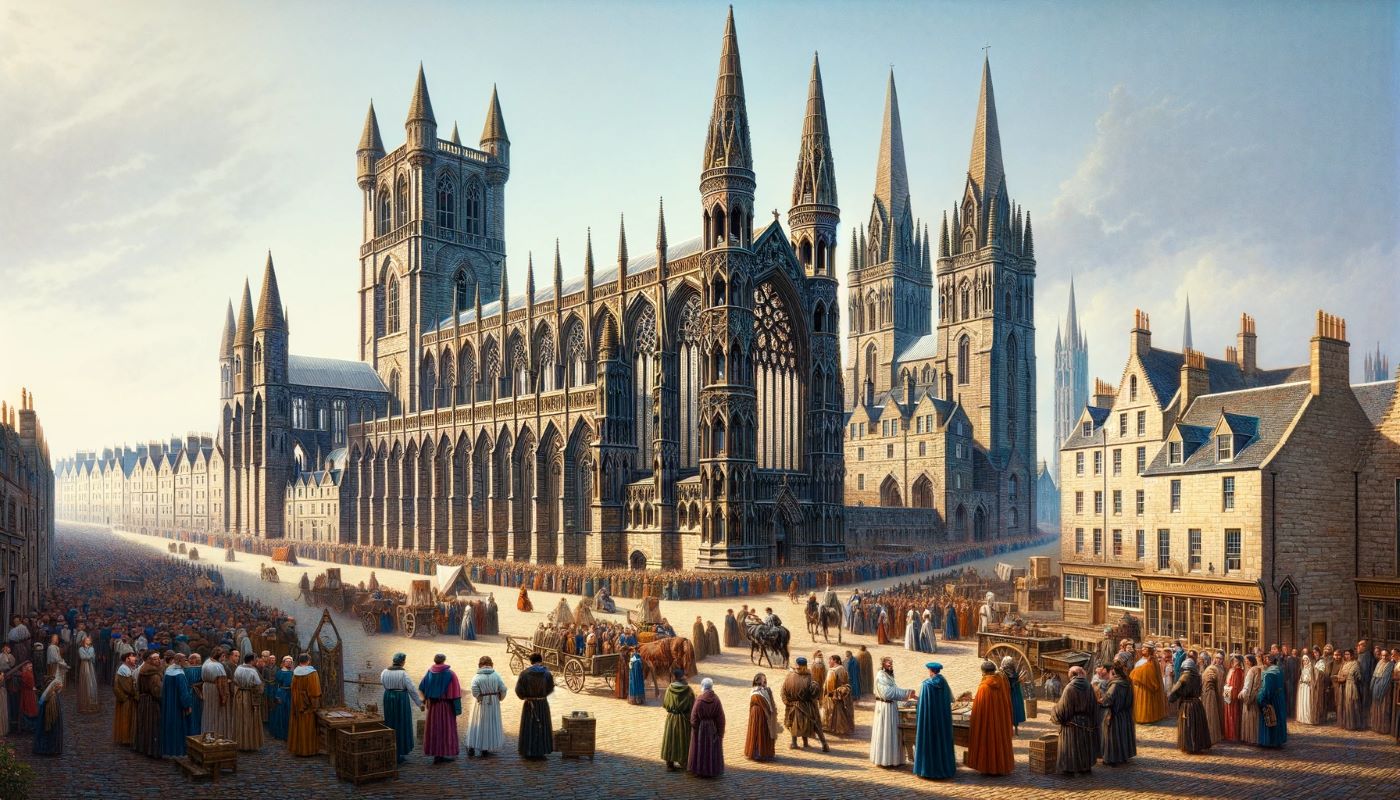

Arts and Culture
What Did St. Andrews Cathedral Look Like
Published: February 18, 2024
Jason DeRose, Managing Editor at Christian.net, uses his expertise in religion and journalism to deepen understanding of faith's societal impacts. His editorial leadership, coupled with a strong academic background, enriches the platform’s diverse content, earning him recognition in both journalism and religious circles.
Explore the captivating history and architecture of St. Andrews Cathedral, a masterpiece of arts and culture. Uncover the grandeur of this iconic landmark and its significance in the world of heritage and art.
(Many of the links in this article redirect to a specific reviewed product. Your purchase of these products through affiliate links helps to generate commission for Christian.net, at no extra cost. Learn more)
Table of Contents
Introduction
St. Andrews Cathedral, a magnificent symbol of medieval grandeur, stands as a testament to the rich history and architectural prowess of Scotland. This awe-inspiring structure, located in the historic town of St. Andrews, once served as the center of religious and cultural life in the region. The cathedral's imposing presence and intricate design have captivated the imagination of visitors and historians alike, offering a glimpse into a bygone era of opulence and spiritual devotion.
As we embark on a journey to explore the grandeur of St. Andrews Cathedral, we will delve into its storied past, uncovering the events that shaped its construction, the architectural features that defined its allure, and the enduring legacy it has left behind. From the soaring spires that once graced the skyline to the intricate details adorning its interior, every facet of this architectural marvel tells a compelling story of faith, innovation, and the passage of time.
Join me as we unravel the mysteries of St. Andrews Cathedral, immersing ourselves in the splendor of its design and the echoes of history that resonate within its hallowed walls. Let us embark on a virtual pilgrimage to a place where the past comes alive, and the beauty of human ingenuity stands as a testament to the enduring spirit of creativity and devotion.
Read more: 20 Christmas Novena Prayers To St Andrew
History of St. Andrews Cathedral
The history of St. Andrews Cathedral is a tapestry woven with threads of triumph and tragedy, spanning centuries of religious fervor and architectural innovation. The origins of this iconic structure can be traced back to the 12th century when Bishop Robert, the leader of the diocese of St. Andrews, envisioned a grand cathedral that would stand as a beacon of faith and a testament to the power and influence of the church.
Construction of the cathedral commenced in 1160, with the ambitious project reflecting the aspirations of the ecclesiastical authorities to create a monumental edifice that would rival the grandeur of European cathedrals. The cathedral's strategic location in the ecclesiastical center of Scotland underscored its significance as a symbol of spiritual authority and cultural prominence.
Over the years, the cathedral underwent several phases of expansion and enhancement, with each iteration adding to its splendor and architectural significance. The soaring spires, intricate carvings, and majestic stained glass windows bore witness to the skilled craftsmanship and unwavering dedication of the artisans and laborers who toiled to bring the bishop's vision to life.
However, the cathedral's history is also marked by periods of turmoil and devastation. In 1559, during the Scottish Reformation, the cathedral fell victim to a wave of religious upheaval, leading to its eventual decline and abandonment. The once resplendent structure, which had stood as a testament to the might of the church, now lay in ruins, a poignant reminder of the shifting tides of history.
Despite its tumultuous past, the legacy of St. Andrews Cathedral endures as a testament to the enduring spirit of human creativity and resilience. The remnants of its majestic architecture continue to inspire awe and reverence, serving as a poignant reminder of the indelible mark it has left on Scotland's cultural landscape.
As we reflect on the history of St. Andrews Cathedral, we are reminded of the enduring power of architectural marvels to transcend time and connect us to the legacies of the past. The cathedral's story is a testament to the enduring human spirit and the timeless allure of structures that stand as testaments to the aspirations and achievements of bygone eras.
Architectural Features
The architectural features of St. Andrews Cathedral are a testament to the ingenuity and artistry of the medieval craftsmen who brought this grand edifice to life. From its soaring spires to the intricate details adorning its façade, every element of the cathedral's design reflects a harmonious blend of Gothic inspiration and innovative construction techniques.
1. Soaring Spires and Towers
The cathedral's skyline was once dominated by a series of soaring spires and towers that reached towards the heavens, casting a majestic silhouette against the Scottish sky. These architectural marvels, characterized by their pointed arches and delicate tracery, exemplified the height of Gothic design, symbolizing the aspirations of the church to elevate the human spirit towards the divine.
2. Ornate Carvings and Sculptures
The exterior of St. Andrews Cathedral was adorned with a profusion of ornate carvings and sculptures, each intricately crafted to convey religious narratives and symbolic motifs. From the delicate foliage motifs that adorned the columns to the expressive depictions of saints and biblical scenes, the cathedral's façade served as a canvas for the artistic expression of the medieval craftsmen who imbued every stone with spiritual significance and aesthetic beauty.
Read more: What Is St. Paul Cathedral
3. Majestic Rose Window
One of the most striking architectural features of the cathedral was its majestic rose window, a circular stained glass masterpiece that bathed the interior in a kaleidoscope of vibrant hues. The intricate tracery and radiant colors of the rose window served as a focal point of spiritual contemplation, inviting worshippers to gaze upon its ethereal beauty and find solace in the transcendent light that filtered through its intricate patterns.
4. Ribbed Vaults and Flying Buttresses
The interior of St. Andrews Cathedral was characterized by a network of ribbed vaults and flying buttresses that supported the lofty ceilings and distributed the weight of the structure with remarkable elegance and efficiency. These architectural innovations not only contributed to the cathedral's structural stability but also created a sense of awe-inspiring grandeur, as the interplay of light and shadow accentuated the soaring heights and graceful curves of the interior space.
5. Cloister and Chapter House
Adjacent to the cathedral, a cloister and chapter house stood as architectural marvels in their own right, offering tranquil spaces for contemplation and communal gatherings. The cloister, with its graceful arcades and lush gardens, provided a serene retreat for the clergy and scholars, while the chapter house served as a venue for important ecclesiastical deliberations, its architectural details reflecting the dignified purpose for which it was intended.
The architectural features of St. Andrews Cathedral stand as a testament to the enduring legacy of medieval craftsmanship and spiritual devotion. Despite the passage of centuries and the ravages of time, the cathedral's design continues to inspire wonder and admiration, inviting visitors to marvel at the timeless beauty of a structure that transcends the boundaries of history and speaks to the eternal aspirations of the human spirit.
Interior Design
The interior design of St. Andrews Cathedral was a symphony of architectural splendor and spiritual symbolism, captivating the senses and stirring the soul with its awe-inspiring beauty. As visitors crossed the threshold of the cathedral, they were greeted by a sanctuary of light and space, where every element of the design harmonized to create an atmosphere of transcendent grandeur.
Read more: What Is The St. Basil’s Cathedral
1. Ethereal Light and Stained Glass
The interior of the cathedral was bathed in a luminous glow, as sunlight filtered through the resplendent stained glass windows, casting a kaleidoscope of colors upon the stone floors and walls. The interplay of light and color created a sense of ethereal beauty, enveloping the space in a transcendent aura that invited worshippers to contemplate the divine mysteries depicted in the vibrant hues of the glass.
2. Pillars of Faith and Graceful Arches
The nave of the cathedral was flanked by a series of majestic pillars, their slender forms reaching towards the vaulted ceilings in a testament to the enduring strength and grace of the structure. The rhythmic repetition of the pillars, coupled with the elegant sweep of the pointed arches, created a sense of verticality and upward aspiration, inviting visitors to gaze heavenward and contemplate the celestial realms beyond.
3. Sacred Altar and Spiritual Focal Point
At the heart of the cathedral, the sacred altar stood as a focal point of spiritual reverence, its ornate carvings and gilded adornments serving as a testament to the sanctity of the space. The altar, bathed in the soft glow of candlelight and the filtered sunlight, beckoned worshippers to gather in contemplation and prayer, offering a tangible connection to the divine presence that permeated the hallowed halls.
4. Tranquil Cloister and Contemplative Spaces
Adjacent to the cathedral, the cloister provided a tranquil oasis for reflection and contemplation, its graceful arcades and verdant gardens offering a serene retreat from the bustle of the outside world. The cloister, with its interplay of light and shadow, served as a metaphor for the spiritual journey, inviting visitors to wander its peaceful corridors and find solace in the timeless beauty of the architectural details that adorned its walls.
Read more: What Religion Is St. David’s Cathedral
5. Resplendent Choir and Melodic Harmony
The choir of the cathedral, with its intricately carved stalls and soaring vaulted ceilings, served as a space for melodic harmony and communal worship. The resplendent woodwork and delicate tracery of the choir stalls reflected the meticulous craftsmanship of the artisans who imbued every detail with a sense of reverence and devotion, creating a space where the voices of the faithful could unite in transcendent praise.
The interior design of St. Andrews Cathedral stands as a testament to the enduring power of architectural beauty to elevate the human spirit and inspire a sense of wonder and reverence. Every element of the design, from the ethereal light filtering through the stained glass to the graceful arches and sacred spaces, invites visitors to embark on a journey of contemplation and discovery, connecting with the timeless legacy of faith and creativity that defines this architectural masterpiece.
Exterior Design
The exterior design of St. Andrews Cathedral was a testament to the grandeur and architectural innovation of the medieval era. As visitors approached the cathedral, they were greeted by a breathtaking display of Gothic splendor, where every facet of the exterior design harmonized to create an awe-inspiring facade that spoke to the cathedral's significance as a spiritual and cultural landmark.
The soaring spires and towers, reaching towards the heavens, dominated the skyline, casting a majestic silhouette against the Scottish sky. These architectural marvels, characterized by their pointed arches and delicate tracery, exemplified the height of Gothic design, symbolizing the aspirations of the church to elevate the human spirit towards the divine. The intricate details adorning the spires, from the delicate finials to the ornate gargoyles, added a sense of whimsy and grandeur to the exterior, inviting visitors to marvel at the craftsmanship and artistry that adorned every inch of the cathedral's exterior.
The facade of St. Andrews Cathedral was adorned with a profusion of ornate carvings and sculptures, each intricately crafted to convey religious narratives and symbolic motifs. From the delicate foliage motifs that adorned the columns to the expressive depictions of saints and biblical scenes, the cathedral's exterior served as a canvas for the artistic expression of the medieval craftsmen who imbued every stone with spiritual significance and aesthetic beauty. The intricate carvings, weathered by centuries of wind and rain, bore witness to the enduring legacy of the cathedral, inviting visitors to contemplate the stories and symbolism etched into the very fabric of the structure.
One of the most striking features of the exterior design was the majestic rose window, a circular stained glass masterpiece that bathed the facade in a kaleidoscope of vibrant hues. The intricate tracery and radiant colors of the rose window served as a focal point of spiritual contemplation, inviting worshippers and visitors alike to gaze upon its ethereal beauty and find solace in the transcendent light that filtered through its intricate patterns. The rose window, with its intricate geometric patterns and vibrant hues, stood as a testament to the skill and artistry of the medieval glassmakers who created this resplendent masterpiece.
The exterior design of St. Andrews Cathedral stands as a testament to the enduring legacy of medieval craftsmanship and spiritual devotion. Every element of the facade, from the soaring spires to the intricate carvings and the resplendent rose window, invites visitors to marvel at the timeless beauty of a structure that transcends the boundaries of history and speaks to the eternal aspirations of the human spirit.
Destruction and Ruins
The history of St. Andrews Cathedral is marred by a period of profound devastation and decline, marking a stark contrast to its former glory. In 1559, during the tumultuous era of the Scottish Reformation, the cathedral fell victim to a wave of religious upheaval that would forever alter its fate. The once resplendent structure, which had stood as a testament to the might of the church, now lay in ruins, a poignant reminder of the shifting tides of history.
The fervor of the Reformation brought about a seismic shift in religious attitudes, leading to the widespread rejection of the authority and symbolism of the Catholic Church. As a result, St. Andrews Cathedral, once a beacon of ecclesiastical power and architectural magnificence, became a casualty of the ideological and political upheaval that swept across Scotland. The cathedral, with its soaring spires and intricate carvings, bore witness to the tumultuous events that unfolded, its walls echoing with the echoes of religious fervor and societal transformation.
The aftermath of the Reformation left the cathedral in a state of disrepair and neglect, its once resplendent interior now a haunting labyrinth of crumbling stone and faded grandeur. The majestic spires that had once graced the skyline now stood as silent sentinels of a bygone era, their weathered facades bearing the scars of time and upheaval. The intricate carvings and sculptures that had adorned the exterior now bore the patina of neglect, their once vibrant details muted by the passage of centuries.
The ruins of St. Andrews Cathedral, with their haunting beauty and poignant echoes of the past, stand as a testament to the enduring legacy of human endeavor and the indomitable spirit of creativity. Despite the ravages of time and the upheavals of history, the cathedral's ruins continue to captivate the imagination, inviting visitors to contemplate the transient nature of human achievements and the enduring allure of structures that bear witness to the passage of time.
The destruction and ruins of St. Andrews Cathedral serve as a poignant reminder of the impermanence of human endeavors and the enduring legacy of structures that transcend the boundaries of history. The cathedral's shattered spires and weathered walls stand as a testament to the resilience of the human spirit and the enduring power of architectural beauty to transcend the ravages of time.
Reconstruction and Preservation
Following centuries of neglect and the ravages of time, efforts to preserve and reconstruct St. Andrews Cathedral have been instrumental in safeguarding its legacy and ensuring that future generations can continue to marvel at its enduring beauty. The preservation of the cathedral's ruins has been a labor of love and dedication, with preservationists and historians working tirelessly to protect the remnants of this architectural masterpiece from further decay and erosion.
The process of reconstruction and preservation has involved meticulous efforts to stabilize the existing structures, prevent further deterioration, and provide visitors with a deeper understanding of the cathedral's historical and cultural significance. Preservation initiatives have included the installation of protective measures to shield the ruins from the elements, as well as the implementation of educational programs and guided tours to engage visitors in the cathedral's rich history and architectural splendor.
In addition to preservation efforts, ongoing research and archaeological excavations have shed new light on the cathedral's original design and construction techniques, offering invaluable insights into the medieval craftsmanship and engineering prowess that brought this grand edifice to life. These discoveries have not only deepened our understanding of the cathedral's architectural significance but have also enriched the narrative of its enduring legacy.
The reconstruction and preservation of St. Andrews Cathedral stand as a testament to the enduring power of human dedication and ingenuity in safeguarding our cultural heritage. By protecting and celebrating the remnants of this architectural marvel, preservationists and historians have ensured that the cathedral's legacy will continue to inspire awe and reverence for generations to come, serving as a poignant reminder of the enduring spirit of creativity and devotion that defines our shared human experience.
Through the collective efforts of preservationists, historians, and dedicated individuals, the reconstruction and preservation of St. Andrews Cathedral have breathed new life into its ancient stones, allowing visitors to connect with the cathedral's timeless beauty and immerse themselves in the echoes of history that resonate within its hallowed walls. As we continue to cherish and protect this architectural treasure, we honor the enduring legacy of St. Andrews Cathedral and the indelible mark it has left on Scotland's cultural landscape.
Read more: St Giles Cathedral: What Religion
Conclusion
In conclusion, the story of St. Andrews Cathedral is a testament to the enduring legacy of human creativity, resilience, and the timeless allure of architectural marvels. From its humble beginnings as a grand vision of ecclesiastical authority to its eventual decline and transformation into haunting ruins, the cathedral has stood as a silent witness to the passage of centuries and the shifting tides of history.
The architectural features of St. Andrews Cathedral, from its soaring spires and intricate carvings to its resplendent interior and exterior design, reflect the heights of medieval craftsmanship and the enduring power of spiritual symbolism. The cathedral's design invites visitors to embark on a journey of contemplation and discovery, connecting with the timeless legacy of faith and creativity that defines this architectural masterpiece.
The ruins of St. Andrews Cathedral, with their haunting beauty and poignant echoes of the past, stand as a testament to the impermanence of human endeavors and the enduring allure of structures that bear witness to the passage of time. Despite the ravages of time and the upheavals of history, the cathedral's ruins continue to captivate the imagination, inviting visitors to contemplate the transient nature of human achievements and the enduring allure of structures that transcend the boundaries of history.
The reconstruction and preservation of St. Andrews Cathedral have breathed new life into its ancient stones, allowing visitors to connect with the cathedral's timeless beauty and immerse themselves in the echoes of history that resonate within its hallowed walls. By protecting and celebrating the remnants of this architectural marvel, preservationists and historians have ensured that the cathedral's legacy will continue to inspire awe and reverence for generations to come, serving as a poignant reminder of the enduring spirit of creativity and devotion that defines our shared human experience.
As we reflect on the enduring legacy of St. Andrews Cathedral, we are reminded of the timeless allure of architectural beauty and the indelible mark it leaves on the cultural landscape. The cathedral's story serves as a testament to the enduring power of human dedication and ingenuity in safeguarding our cultural heritage, ensuring that future generations can continue to marvel at its enduring beauty and connect with the echoes of history that resonate within its ancient stones.


